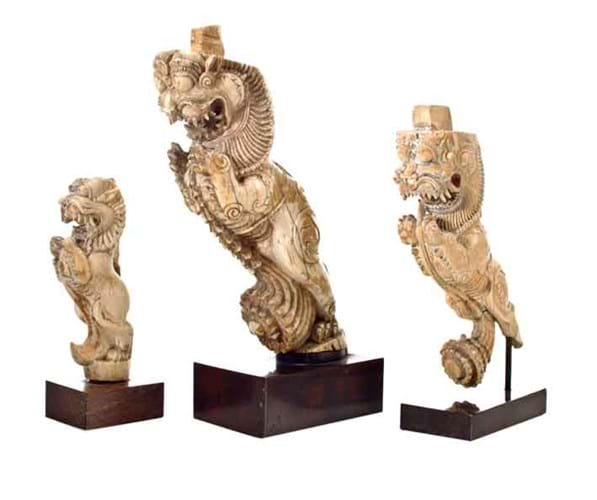
UK Border Force had threatened to destroy the artworks that, through no fault of the dealer, had been shipped from the US without the proper paperwork.
The case arose more than a year after Van den Bergh had bought three Indian yali architectural brackets at Bonhams New York in March 2012.
His application for CITES permits to move the ivories to the UK had been granted but it later emerged that the carrier (who had sub-contracted to Fed-Ex) had failed to process the documentation correctly. The package was forfeited by the UK Border Force on May 25, 2013 on the grounds that the original export permit was missing and other documents were not properly stamped.
Legal Cost
It is only in exceptional circumstances that such decisions are overturned and Van den Bergh was advised that the legal cost of pursuing the ivories could far outweigh their commercial value. He was told that, as contraband they would likely be destroyed and even his offer of donating them to a museum was refused.
A year into the process of restoration, specialist art lawyer Jessica Franses of 36 Bedford Row chose to pursue the case on the client's behalf, keen to test the theory that "with the right legal assistance and properly challenged these cases are not hopeless". She added it was "very rare that we find someone who wants to fight a border control CITES ruling".
Working pro bono, she and her colleagues lodged an appeal based on three points. These were that:
1. Engaging the services of a professional shipper, the dealer had not been at fault. The error had been with the carrier.
2. The artworks were extremely rare and their destruction would be an affront to the cultural heritage of India. A statement provided by an expert witness said fewer than 100 similar ivories exist.
3. UK border force had relied upon an 'irrelevant' consideration when suggesting Van den Bergh might have applied for a retrospective licence. The testimony of a US art lawyer Nicholas O'Donnell, attorney and partner at Sullivan & Worcester LLP said that such a retrospective licence would never have been granted.
The case was due to be heard at a tribunal on August 11-12 but the authorities notified Van den Bergh's legal team of their change of mind in the week prior. A fresh decision declared the dealer guilty only of an "unintentional infringement" with the restoration fee set at £100. The goods were returned on August 13.
According to Van den Bergh's solicitor, Paul Howcroft of Fladgate LLP, "the case demonstrates that you have to fight hard and persevere all the way to get UK Border Force to back down".
Yali Brackets
The ivories themselves were a trio of yali or vyala architectural brackets made in 17th century Madurai.
These small elements, the largest 6in (15cm) high, would have likely been part of a processional mandapa (temple hall), an elaborate structure that carried sculptures through the streets during special festivals. Other examples are in the Victoria and Albert Museum and the Los Angeles County Museum of Art, although expert testimony suggested that they were among fewer than 100 survivors from the period.
They were bought by Joost van den Bergh at Bonhams' sale of Indian, Himalayan and Southeast Asian art on March 19, 2012. Sold as part of the Paul F Walter collection, they had been acquired from Spink & Son in 1983.





